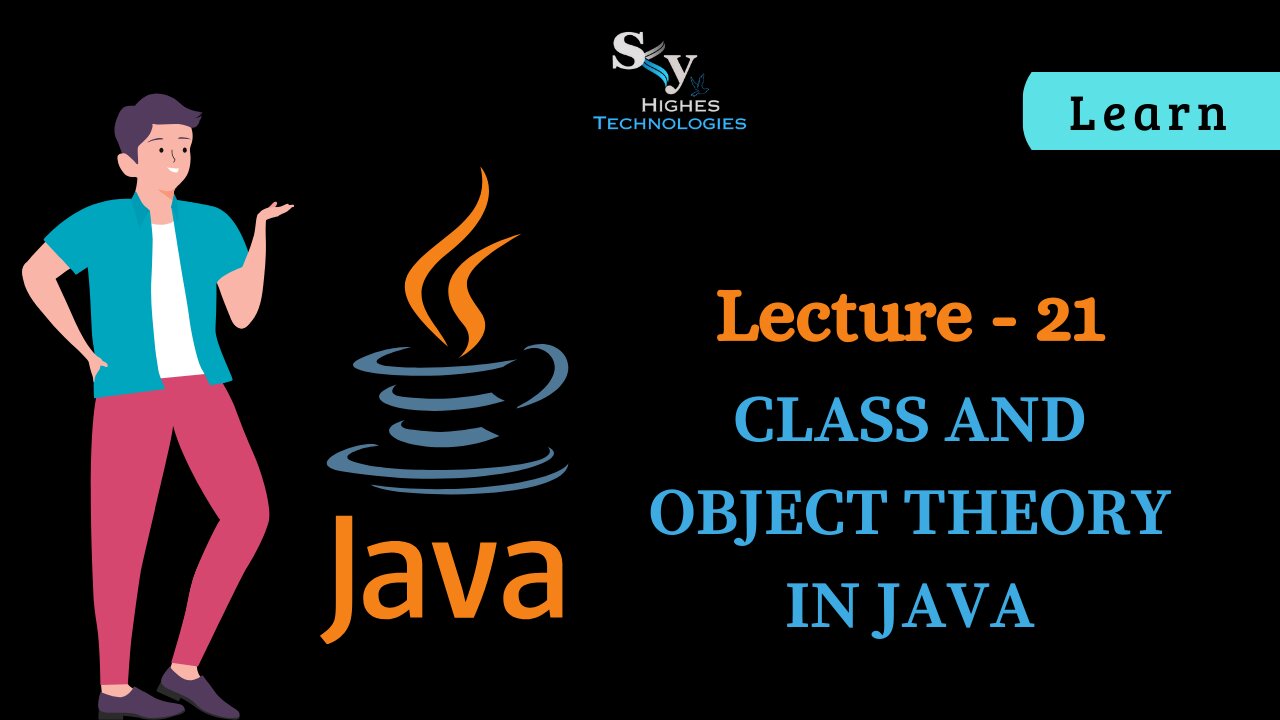Premium Only Content

#21 Class and Object Theory in JAVA | Skyhighes | Lecture 21
Classes and Objects: Foundations of OOP
Object-Oriented Programming (OOP): A programming paradigm that revolves around "objects" as fundamental building blocks. It models real-world entities and their relationships, promoting code reusability, maintainability, and modularity.
Classes: Blueprints or templates that define the characteristics (attributes) and behaviors (methods) of objects. They specify what objects of that class will look like and what they can do.
Objects: Instances of classes. They are concrete entities with specific state (values of their attributes) and the ability to perform actions (methods).
Key Concepts:
Class Declaration:
Use the class keyword followed by the class name.
Enclose attributes (variables) and methods (functions) within curly braces.
Java
public class Dog {
String breed;
int age;
void bark() {
System.out.println("Woof!");
}
}
Use code with caution. Learn more
Object Creation (Instantiation):
Use the new keyword followed by the class name and a constructor call.
Java
Dog myDog = new Dog();
Use code with caution. Learn more
Attributes (Member Variables):
Represent the data associated with an object.
Define them within the class using various data types (e.g., int, String, boolean).
Methods (Member Functions):
Define the actions that objects can perform.
Contain code blocks that operate on the object's attributes and other data.
Accessing and Modifying Object State:
Use the dot (.) operator to access attributes and methods of an object.
Java
myDog.breed = "Labrador";
myDog.bark(); // Output: "Woof!"
Use code with caution. Learn more
Understanding the Relationship:
A class is like a recipe for creating objects.
Each object is a unique instance of the class, with its own set of attribute values.
Objects interact with each other by calling each other's methods.
Benefits of OOP:
Encapsulation: Bundling data and behavior within objects, protecting data integrity.
Inheritance: Creating new classes (subclasses) that inherit properties and behaviors from existing classes (superclasses), promoting code reusability.
Polymorphism: Objects of different classes responding to the same method call in different ways, allowing for flexible and adaptable code.
Remember: Classes and objects are fundamental to OOP and essential for structuring Java programs effectively. Understanding their relationship and properties is crucial for building well-organized and maintainable software.
-
 1:16:35
1:16:35
JULIE GREEN MINISTRIES
2 hours agoLIVE WITH JULIE
29.9K88 -
 LIVE
LIVE
Welcome to the Rebellion Podcast
12 hours agoDon3po is Live - WTTR Podcast Live 9/4
200 watching -
 13:43
13:43
The Kevin Trudeau Show Limitless
23 hours agoClassified File 3 | Kevin Trudeau EXPOSES Secret Society Brainwave Training
44.5K9 -
 LIVE
LIVE
The Chris Salcedo Show
13 hours agoAmericans Are Tired Of Leftists & Fake-GOP Who Cater To Them
539 watching -
 1:12:23
1:12:23
Game On!
20 hours ago $0.94 earnedFootball IS BACK! Cowboys vs Eagles Opening Night Kickoff!
7.32K1 -
 LIVE
LIVE
The Bubba Army
23 hours ago#1 Documentary IN THE WORLD! - Bubba the Love Sponge® Show | 9/04/25
1,658 watching -
 39:31
39:31
Her Patriot Voice
14 hours ago $1.84 earnedBlack Conservative Surrounded + ROBBED By Leftists!
11.2K25 -
 13:25
13:25
The Gun Collective
14 hours agoWOW! A LOT of new GUNS just dropped!
12.7K8 -
 2:02:53
2:02:53
BEK TV
1 day agoTrent Loos in the Morning - 9/04/2025
9.47K -
 8:13
8:13
Geoff_Tac
1 day agoMAC 1014 Shotgun (Benelli Clone)
7.79K2